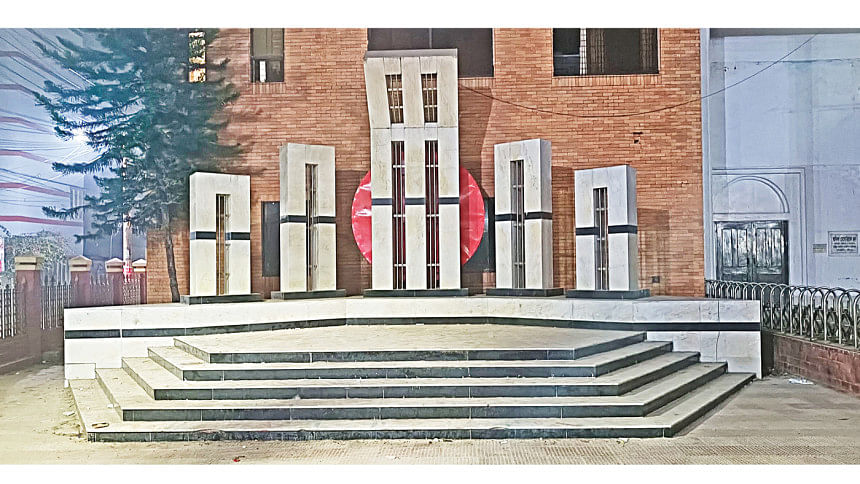Language Movement in Faridpur

This year marks the 73rd anniversary of the 1952 Language Movement. Drawing on research based on various published books, this 21-part series tells the story of the historic struggle for our mother tongue.
Like other parts of the country, the demand for Bangla as a state language was made also in Faridpur, where the Language Movement began in 1948.
In February of that year, Muslim League leaders and many other members of the Pakistan Constituent Assembly opposed a proposal to use Bangla in state affairs. Immediately afterwards, like their peers in Dhaka, the students of Faridpur also erupted in protests centring Rajendra College and the schools.
According to Ahmed Rafiq's book Bhasha Andolan: Teknaf Theke Tetulia, the protesters in Faridpur decided to successfully enforce a strike announced centrally from Dhaka for March 11, 1948 by the Rashtrabhasha Sangram Parishad. Rajendra College students, led by Syed Mahbub Ali, Mohiuddin Ahmed, Abdul Matin and others, started campaigning for the strike in the last week of February through processions and street rallies.
A spontaneous strike was observed in Faridpur, Dr Abu Muhammad Delwar Hossain wrote in his book Bhasha Andolaner Ancholik Itihas. Police baton-charged the protesters, injuring Mahbub Ali, Mohiuddin Ahmed and several others when the demonstrators brought out a procession from Rajendra College and started marching around the city. The police detained 11 student leaders, but released them later due to the sympathetic role of Faridpur district's administrator Abdul Halim Chowdhury.
After the government declared Urdu as the sole state language of Pakistan on January 27, 1952, a Rashtrabhasha Sangram Committee was formed in Faridpur in early February, with Imamuddin Ahmed as the president and Monowar Hossain as the general secretary. With the support of leftist leaders and activists, the movement spread all over Greater Faridpur. A Flag Day was observed in Faridpur on February 4. And it was decided that a strike would be enforced on February 21.
According to the book Bhasha Andolone Faridpur by Rezaul Karim, the agitated students took to the streets when the news of killings of students in police firing in Dhaka on February 21 reached Faridpur that afternoon through telegram. Several student protesters in Faridpur were injured when the police clubbed them outside Kotwali Police Station.
A full-day strike was observed in Faridpur on February 22. On that day, the students marched from Rajendra College to Chawkbazar Mosque in violation of section 144 of the CrPC, which restricts gatherings. The police attacked the procession and arrested several demonstrators. In protest, the students staged a sit-in outside Kotwali Police Station until the police released the arrested students at midnight.
From February 23, Faridpur practically became a city of processions. All administrative activities came to a standstill as the movement spread to the rural areas. In protest against the killings in Dhaka, school students also joined the processions in Faridpur.
The Daily Azad newspaper on February 27 reported that the students of Char Atra Azizia Junior High Madrasa in Faridpur enforced a full-scale general strike against the killings in Dhaka. They also flew the national flag at half-mast, brought out a procession and held a rally.
[Translated and edited by Osham-ul-Sufian Talukder]

 For all latest news, follow The Daily Star's Google News channel.
For all latest news, follow The Daily Star's Google News channel. 



Comments